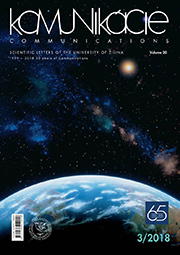Resistance of High-Strength Steels to Stress Corrosion Cracking Depending on External Environment pH Factor
Resistance of High-Strength Steels to Stress Corrosion Cracking Depending on External Environment pH Factor
Author(s): Petr Jonsta, Irena Vlckova, Zdenek Jonsta, Vladimir Tomasek, Tatana FenclovaSubject(s): Energy and Environmental Studies, Methodology and research technology, Transport / Logistics
Published by: Žilinská univerzita v Žilině
Keywords: high-strength steels; heat treatment; stress corrosion cracking; pH factor; intergranular fracture;
Summary/Abstract: The paper deals with the study of stress corrosion cracking of high-strength steels in an aqueous environment with a varying pH factor ranging from 5.5 to 12.0. Steels were studied after quenching and tempering, one of the steels was prone to temper embrittlement. Single-edge notched pre-cracked specimens were used for the experiments. Changes in the pH factor at the crack tip were measured using an antimony electrode. The pH factor values at the crack tip dropped to 2.0. Steel prone to temper embrittlement showed significantly shorter incubation period and more accelerated development of corrosion process compared to the optimized heat treatment of the second steel. Proneness to intergranular fracture was observed close to the fatigue crack tip. The obtained results expand the existing knowledge about localized corrosion processes leading to the refinement of the stress corrosion cracking model when changing the pH factor on the crack tip.
Journal: Komunikácie - vedecké listy Žilinskej univerzity v Žiline
- Issue Year: 20/2018
- Issue No: 3
- Page Range: 19-23
- Page Count: 5
- Language: English

